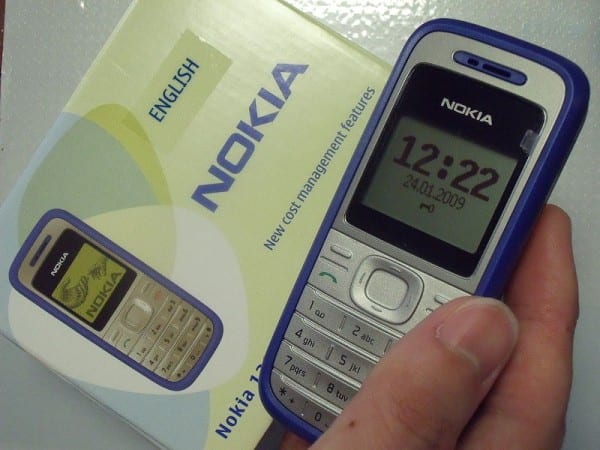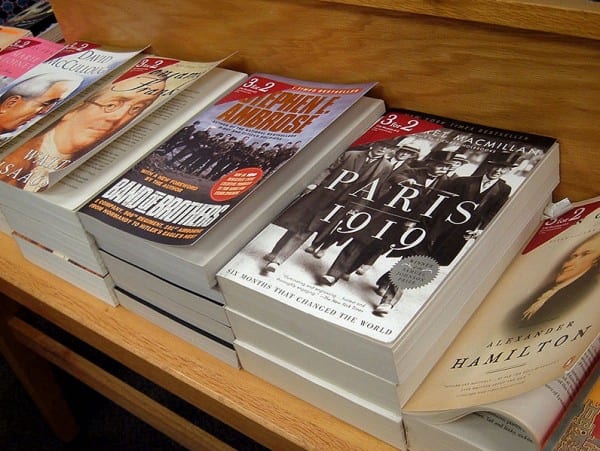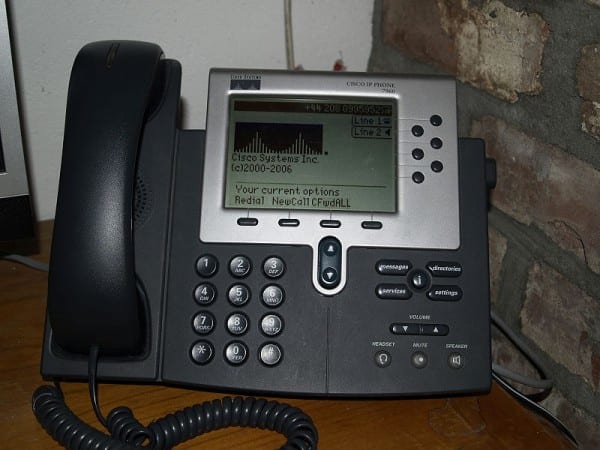Since the halcyon days of clubs and mammoth hides, we’ve been assigning roles, trading services, and strategizing in some capacity. In other words, doing business.
Thanks to centuries of human invention, we no longer spear hunt our groceries. Instead, we buy prepackaged protein using a magnetic strip linked to multinational virtual banking systems. It’s a different world.
To illustrate what got us from mammoth to mega mart, we compiled a list of 25 inventions that changed the way we do business. Without them, commerce as we know it today would be a very different place.
25. The Stapler
A Norwegian craftsman fashioned the first stapler for King Louis XV of France in the 18th century. Since then, organization freaks everywhere have found staplers indispensable. While these analog machines may not make it through the digital revolution, Milton and his red Swingline have given them a permanent place in history.
24. Telegraph
There was a time was when the telegraph ruled the business world. Mortimer, come to Chicago ASAP. Stop. Telegraphs were also the original stock tickers. Sell. Anaconda. 53-1/4. The telegraph led to the fax machine, which in turn made rapid information transfer commonplace in the business world. The telegraph, though not a conversational tool, also bears an ironic resemblance to today’s tweet.
23. Calculator
After comparatively clumsy devices like the abacus and the mechanical arithmometer made the rounds, Japanese inventors released the first commercial pocket calculator in the early 1970s. Pocket calculators soon infiltrated the world of commerce, from finance to state fairs. Engineers and other formula-dependent types also found a valuable work shortcut. Plus, legions of students never completely had to remember the formula for cosigns and tangents.
22. Television
Television and business are old bedfellows. An advertisement and product placement accompanied even the earliest broadcasts. When news became the driving force behind television, business news segments offered the average investor almost real-time stock information, gossip on mergers and acquisitions, and international business news in one place. The invention itself also became its own business, making networks and cable ubiquitous in our daily lives.
21. International Electronic Banking
International electronic banking gives anyone the ability to instantly transfer any amount of money, regardless of currency, in a seconds. Consumers can instantly buy and sell goods and services. Businesses can pay and accept money from hundreds of sources. Investors can make a living day trading from their computers. Foreign workers build fortunes back home through remittance services. The opportunities are just about limitless. Cash, meanwhile, has become something you tip with, or use under the table.
20. Bar Code
Some of us are old enough to remember price stickers on cans of beans and old clunker registers. Back then, tireless managers would rely on a human to count every item sold, then match that to the day’s till.
The bar code changed all that. Known as a Universal Product Code or UPC, the bar code allowed registers to translate the data in the print pattern into an item’s price. It was first introduced to a widespread audience in 1974, starting with a 10-pack of Wrigley’s gum. Thanks to the UPC, those hardworking managers can accurately track what is on the shelves and purchases, streamlining ordering and distribution.
19. Mobile Phone
Mention DynaTAC to any burned out, 80’s-era former stockbroker and they will swoon. They remember the days when only they had a mobile phone. Now everyone has one (or two, or three).
Mobile phones have also morphed from essential client and work communication devices to laptops in our pockets. You know a monumental shift has happened when you can see someone driving a 1976 Pinto while texting their friend in Brazil.
18. Laptop
The laptop is one of biggest recent developments to impact business. It lets you traverse great distances with all your information and enough computing power for applications and presentations. The laptop has probably sealed more recent business deals than any other tool. Thank Adam Osborne and the Osborne 1–circa 1981–for your shiny Macbook or netbook. While you type away on your airplane tray, remember the first laptop, which weighed 25 pounds, probably would have collapsed it.
17. Portable Data Storage
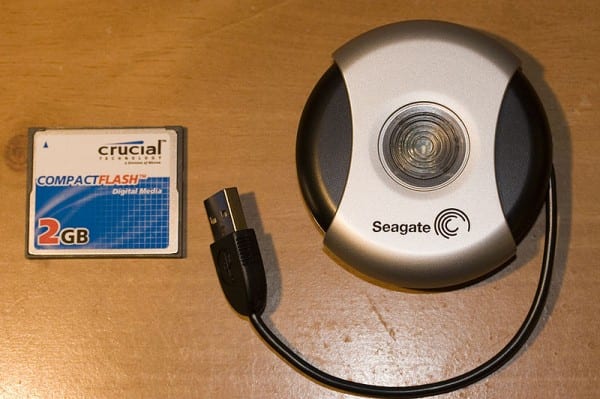
Image: Scared Poet
Back in the day, the record stored music, and the punch card stored directions. Devices with magnetic tape evolved from there, followed by CDs, DVDs, and finally digital byte storage. Being able to transfer data safely and, crucially, in the exact same form as it was created in and saved, has sped up the speed and efficiency of information transfer. That, in turn, has helped facilitate Information Age business as we know it today.
16. Airplane
Sure, the seats are uncomfortable. The food is subpar, even after your MasterCard buys you a $3 bag of chips. Then there are the screaming kids and the annoying guy in the middle seat. All of this is true. But can you imagine a day where it took months to cross the country to meet with someone to possibly sell your wares? Even the vaunted railroad system only cut it down to 7 days–and that only accounts for domestic travel. Imagine the journey on ships for traveling salespeople to Australia or India! Sure makes those 5-hour cross-country work commutes more appealing, doesn’t it?
15. Software

Image: Golftheman
Software, in some form, operates even in the simplest things, like microwave clocks or the low gas warnings in cars. It basically bundles rules and instructions for an operating system. Early software consisted of printed 1|0 cards with different values for each set of 1 and each of 0. Today’s software provides the spreadsheets, word processors, web browsers, and PowerPoint slides without which most businesses meetings would be completely disoriented.
14. Trademarks and Copyrights
Trademarks: That’s hot ™. A trademark is basically a way to register ownership of your product or service. A copyright does the same thing for your original creation, be it a book, slogan, song, or design. Trademarks, copyrights, and patents–their intellectual property cousin–are the legal glue that keep the economy competitive. After all, who’d want 20 companies called ACME that sell left-handed anvils?
13. Portable Timepiece

Image: Hustvedt
The ancient science of measuring time got a leg up with portable timepieces. From the sundial to the watch, portable timepieces helped the world establish standard timezones and cross-lingual terms like AM and PM. Seafarers and long-distance travelers could better plan their time with such devices. Today, portable timepieces practically dictate our days, from planning commutes to catching a plane. Besides, how else would workers know when it’s time for lunch?
12. Books
Books have been made out of shells, bamboo, clay, parchment (vellum), woodblocks, wax tablets, and a whole lot of other stuff. The Gutenberg press of 1440 changed the game by introducing bookmaking to the public realm. No longer relegated to monks and aristocracy, the information-rich book became readily reproducible. This turned books into a separate enterprise. Since then, books have been the primary resource for the transfer of knowledge and business concepts (The Art of War or The Wealth of Nations). Even today, they’re still valuable marketing tools, mea culpas or horn-tooting tomes for titans of industry.
11. Patents
Ever seen a commercial and thought: “Hey, I thought of that!” The patent is the legal way for you to back that up, pal.
The first U.S. one went to Samuel Hopkins in 1790, for an “improvement on the production of potash.” When they first came into usage, patents stopped the powers that be from exploiting and profiting off commoners’ ideas. In addition protecting an invention, patents are licensable pieces of intellectual property. As such, someone can claim or deviate for a patent, if the price is right.
The true power of the patent was forcing inventors, and the businesses that employed them, to “standardize” an idea. Once you file a patent, you have describe it with words and pictures, allowing anyone (in your own company, hopefully) to replicate it. This has led to long-term wealth for many companies and individuals.
10. Paper
Stone tablets sure have evolved over the years. Papyrus and stretched sheep parts adapted through the years into the wood-pulp product we have today. Nowadays, anyone who can scribble slang can transfer knowledge. It should not be forgotten that the primary vessel of knowledge and history has been books, which, of course, contain paper.
9. Credit

Image: Andres Rueda/Flickr
Credit, which prehistorically involved traders lending for a larger return, actually predates currency. It is hard to discern where it all began. As long as someone with extra money will loan money to someone who wants it, in exchange for more money in the future, there will be credit. Credit has not only been used as a means to an end, but also an industry itself. It would be nearly impossible to find any business in the last century that has not participated in credit, either by receiving or extending it.
8. Telephone
The telephone didn’t catch on right away. A full two years after invention, only 50 people owned a phone. Now, almost everyone born in the last 100 years has used one. Long-form communication and contact became commonplace. People were finally able to have private conversations from hundreds of miles away without the intermediary of a telegraph operator. It has been postulated that the telephone was actually the driving force behind the railroad, coal, steel and banking monopolies of the late 19th century.
7. Gun

Image: AdamsGuns.com
The business world and the gun have had a tumultuous relationship for centuries. Outlaws would shoot up trains and stagecoaches for goods in the American Old West. The East India Trading Company made some pirates quite wealthy. Today, the gun helps businesses with transfers of money, private security, crowd control, and, heck, protection from Yemeni pirates. The right to bear arms has also deterred government agencies from taking over businesses. And the business of guns themselves is, well, booming.
6. Internet

Image: Opte.org
ARPAnet came online during the Summer of Love in 1969. That wild Department of Defense experiment–driven by the Cold War–eventually gave birth to the Internet. Today, it’s hard to imagine doing business without email, social media, a website, or electronic invoicing. The Internet also democratized the business world. Anyone can now become a merchant, commentator, or expert with minimal effort. Now that classifieds, formerly hard-to-find research sources, job sites, and payment services are all online, business has officially been revolutionized.
5. Light Bulb
The invention of the electric light meant that the business world was open well past the hours between sunrise and sundown. Allowing employees and factories to work during the dark hours, even if only a few more hours per day, increased production and “uptime” operation, which let companies earn more profit. Restaurants, trains, cars, motion pictures, and a slew of other everyday functions were also transformed by illumination. Besides, when you have a great idea, what appears above your head? A-Ha!
4. Computer
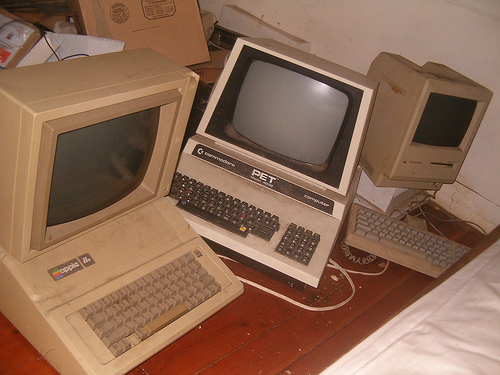
Image: Eurleif/Flickr
The computer has done a thing or two for just about everything related to commerce. If you don’t generalize the computer as a single item, like a laptop, but see it as a chip in a server connected to backend line infrastructure (and so on), the implications are mammoth. From storing information to systemizing business processes to communication, the computer in its many forms will continue to change business for as long as any of us walk this earth.
3. Steam Engine
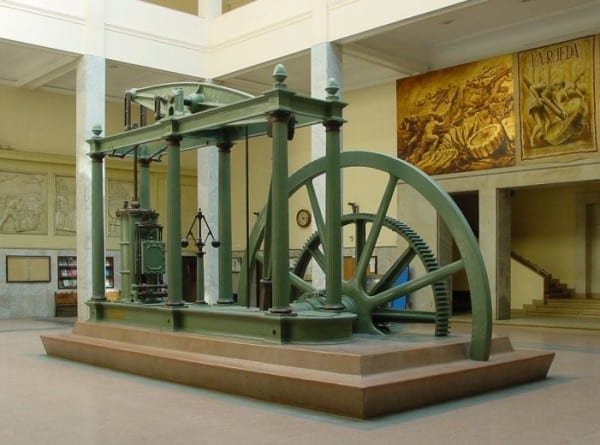
Image: Nicolás Pérez
Thanks to the steam engine, we were able to create the factories, transportation, and corporations that we know and love today. The steam engine had been around for centuries when British engineer Thomas Savery adapted one for industrial use in 1698. More advanced steam-powered engines soon followed Savery’s “mine drayining” device.
The Industrial Revolution resulted. Steam engines radically transformed mining, farming, manufacturing, and transportation. Locomotives and canal systems increased the scope of trade. Cotton mills replaced hand-powered looms, creating the textile industry we know today. The modern assembly line, upon which we still base mass production, also came about during that time. Industry as we know it simply wouldn’t exist without the steam engine.
2. Wheel
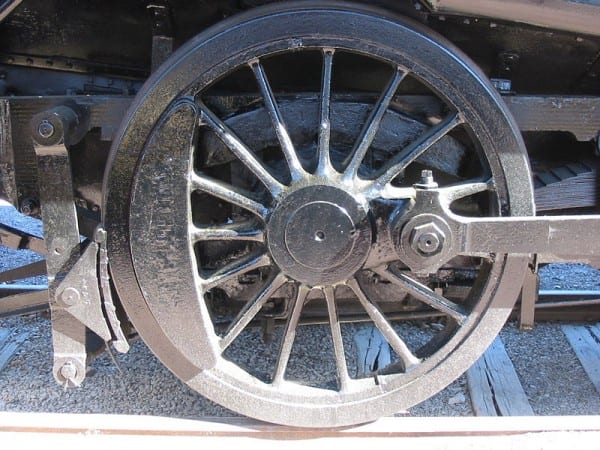
Image: Sean Lamb
Without the wheel, we’d all be riding horses. Without horses, we’d all be village tribespeople. You get the idea. The wheel most obviously changed transportation, but what about grind mills, looms, hard drives, CDs, and any other circular device whose motion we rely on? Seen in aggregate, the wheel is truly incomparable.
1. Electricity
From the Internet to transportation to staying warm in winter, electricity ties our economy together. People have known about the properties of static and electric shocks since antiquity. But it wasn’t until the late 1800s that inventors like Nikola Tesla and Thomas Edison harnessed it for mainstream use. Since then, just about everything we do relies on electricity, and will for the foreseeable future.





